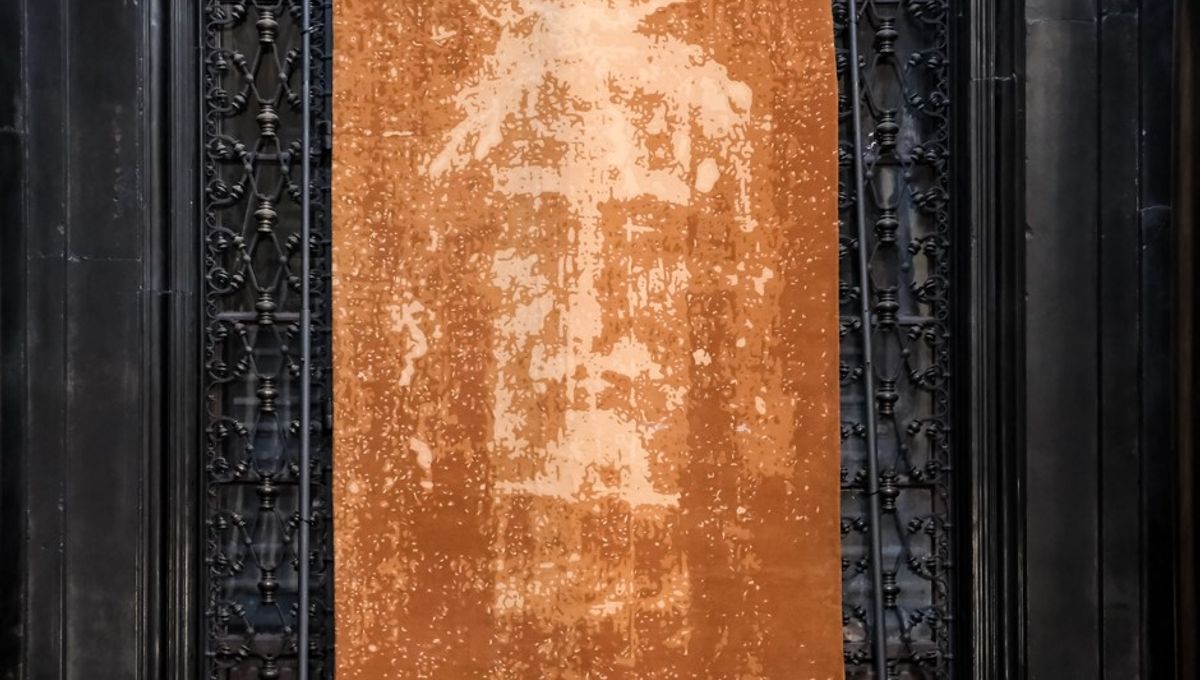
For almost 800 years, scholars and clerics have been locked in dispute over whether a piece of linen known as the Shroud of Turin was used to wrap the body of Jesus Christ after his crucifixion. And white believers are unlikely to be easily swayed, a new study suggests that the markings left on the cloth don’t match the contours of an actual human body, indicating that the piece is probably a medieval artwork.
What we know about the Shroud of Turin
The revered relic made its first known appearance in 1354, when a French knight named Geoffroi de Charny presented the shroud to the Church of Lirey. Marked with the imprint of a bloodied male figure, the item soon gained holy status as word spread that it was in fact Jesus’s burial shroud.
Now housed at the Chapel of the Holy Shroud in Turin, Italy, the controversial artifact continues to attract worshippers and pilgrims, although a number of studies conducted over the past 40 years have cast serious doubt over the provenance and authenticity of the shroud.
In the late 1980s, for instance, a radiocarbon dating study conducted at three separate laboratories found that the fabric dated back to between 1260 and 1390 CE, well over a millennium after Jesus’s supposed execution. At the time, the Archbishop of Turin said that he accepted the findings and that the shroud was probably a replica of Christ’s actual burial cloth.
Yet that didn’t stop the faithful from continuing to view the Turin Shroud as the real deal. More recently, however, scientists have found yet more reasons to doubt the legitimacy of the cloth.
For example, a blood-splatter analysis published in 2018 found that the distribution of the bloodstains were “totally unrealistic” and therefore weren’t produced by genuine wounds. Another examination determined that one of the figure’s arms appears to be 7 to 10 centimeters (3 to 4 inches) longer than the other, suggesting that the imprint is not that of a real person.
In 2022, however, a new dating study on a single thread taken from the shroud determined that the cloth may date back to between 55 and 74 CE, which matches up well with the chronology of Jesus’s life. It’s important to note, however, that this research used a controversial technique and relied on a number of assumptions about the long-term storage of the Turin Shroud.
Specifically, the study concluded that the fabric may have aged more slowly since the 14th century due to the temperature and humidity in the rooms where it was kept, and that most of its degradation occurred prior to this point. If true, this would mean that the date range established by other studies was skewed, and that the shroud could be considerably older than these analyses had suggested.
Could the shroud be Jesus’s burial cloth?
Adding to the never-ending debate, a new study attempts to discern the nature of the item imprinted onto the shroud by mapping the contact areas produced when cloth is draped over a human body. Using 3D simulations, study author Cicero Moraes investigated the so-called Agamemnon Mask effect, whereby the conversion of a three-dimensional object onto a two-dimensional surface produces a number of distortions.
According to the author, the simulations showed that the markings on the Turin Shroud are more compatible with a flat painting than with the direct imprint of an actual human body, “supporting hypotheses of its origin as a medieval work of art.”
Of course, such a finding is highly unlikely to change the minds of ardent believers in the shroud’s authenticity or put an end to the continual flow of pilgrims flocking to Turin, but it does put one more nail into the coffin of Jesus Christ’s burial cloth.
The study is published in the journal Archaeometry.
Source Link: Is The Shroud Of Turin Real Or Fake?